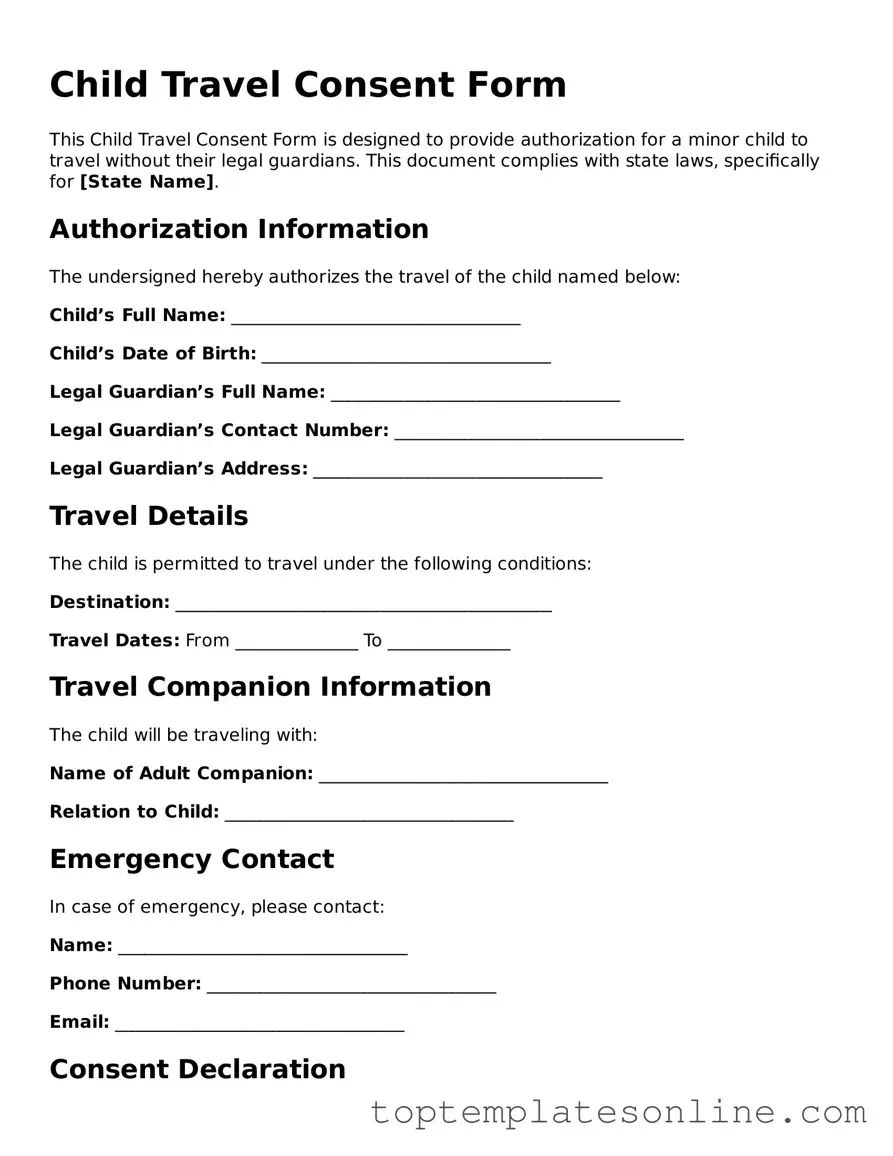When planning a trip with a child, whether it's a family vacation, a visit to relatives, or a school-sponsored event, ensuring that all necessary permissions are in place is crucial. One key document to consider is the Child Travel Consent Form. This form serves as a written authorization from a parent or legal guardian, granting permission for a child to travel with another adult or group. It is especially important when the child is traveling without both parents or guardians, as it helps prevent any misunderstandings or legal issues that may arise during travel. The form typically includes details such as the child's name, travel dates, destination, and the name of the accompanying adult. Additionally, it may require contact information for the parents or guardians, as well as any specific instructions regarding the child's care during the trip. Having this document on hand not only provides peace of mind but also ensures that the traveling adult can address any concerns that authorities might have about the child's well-being while away from home.
